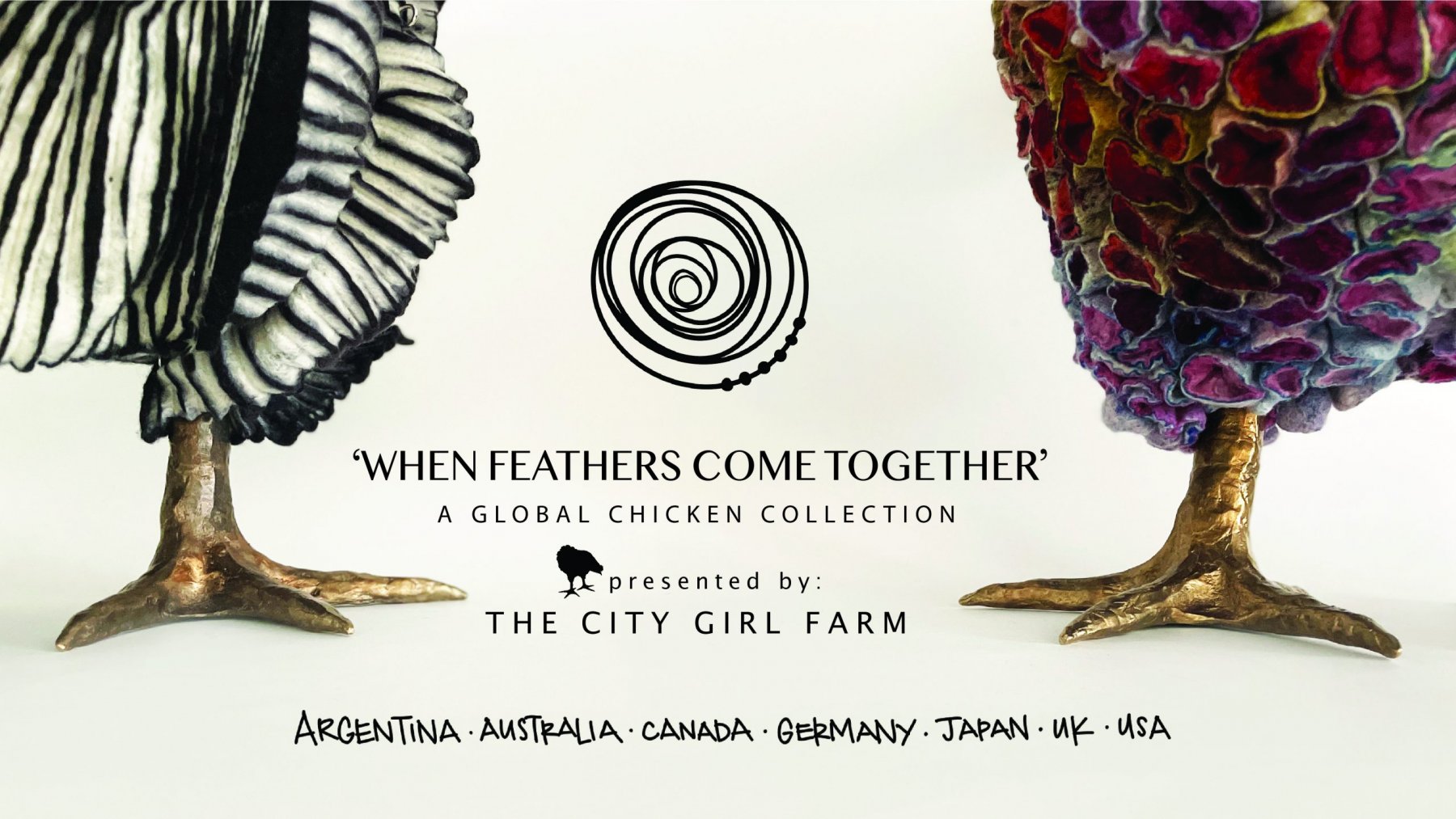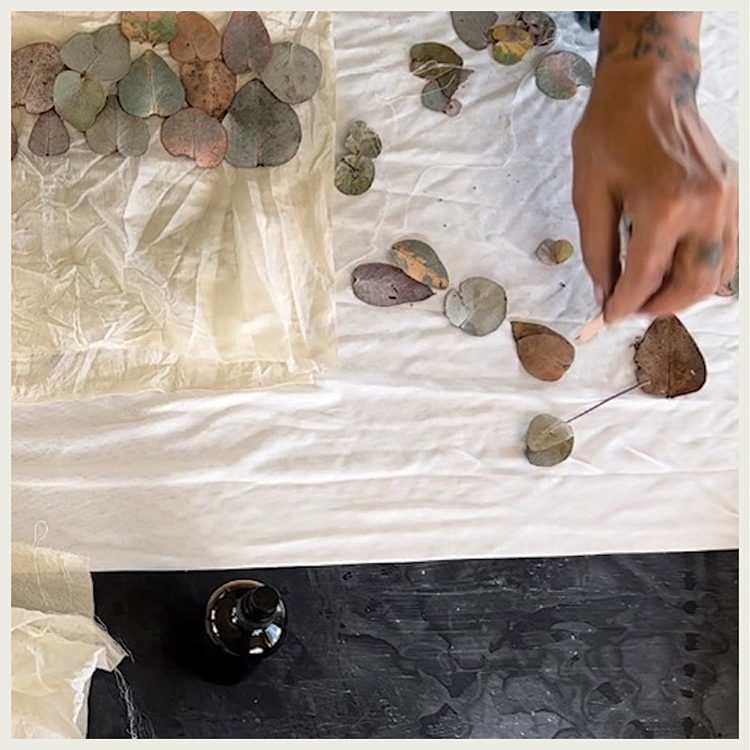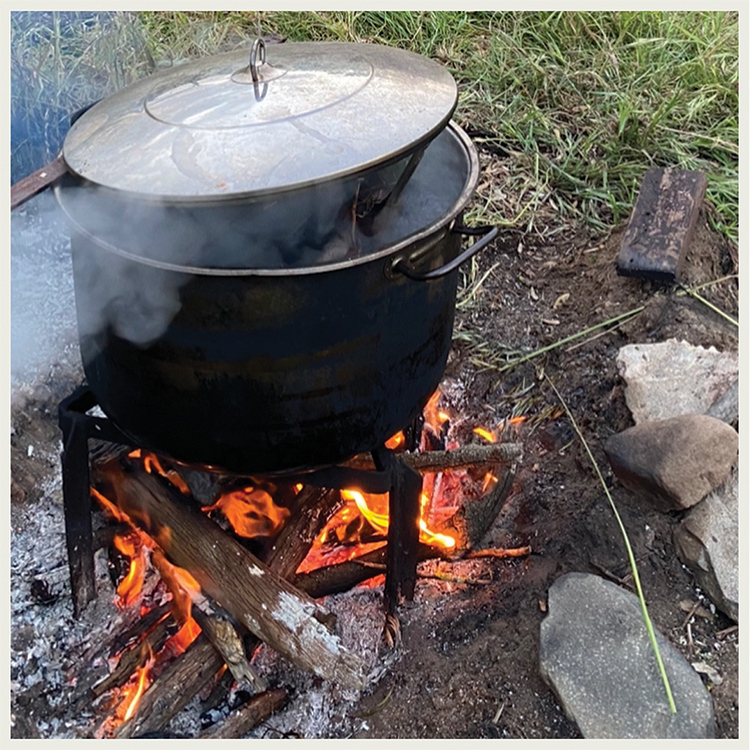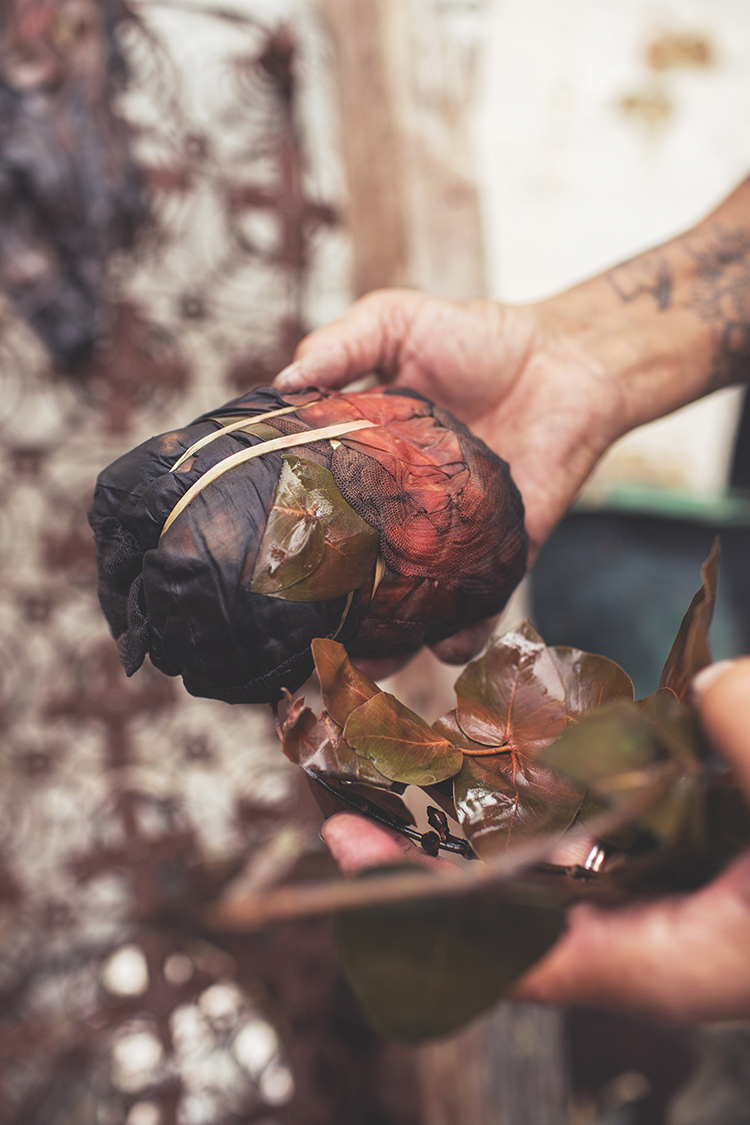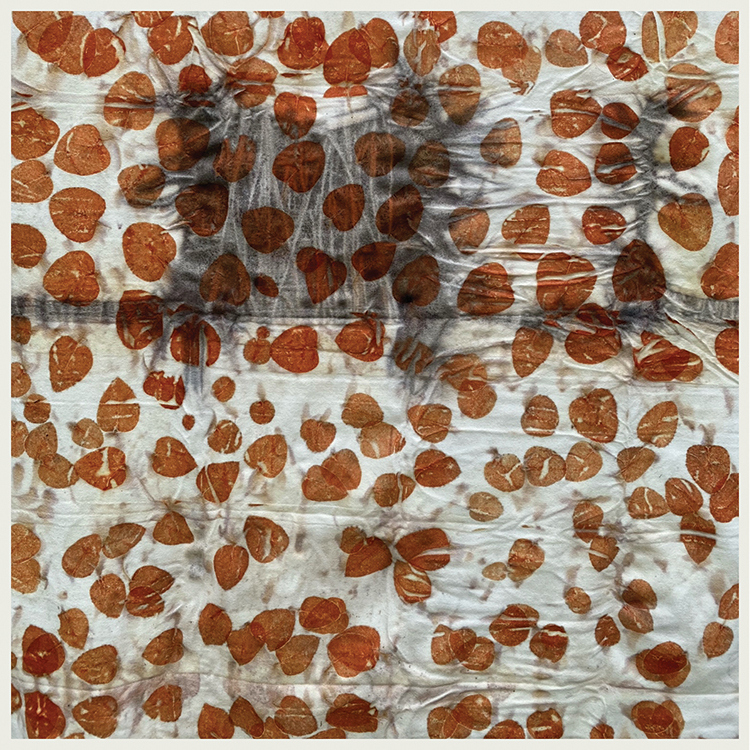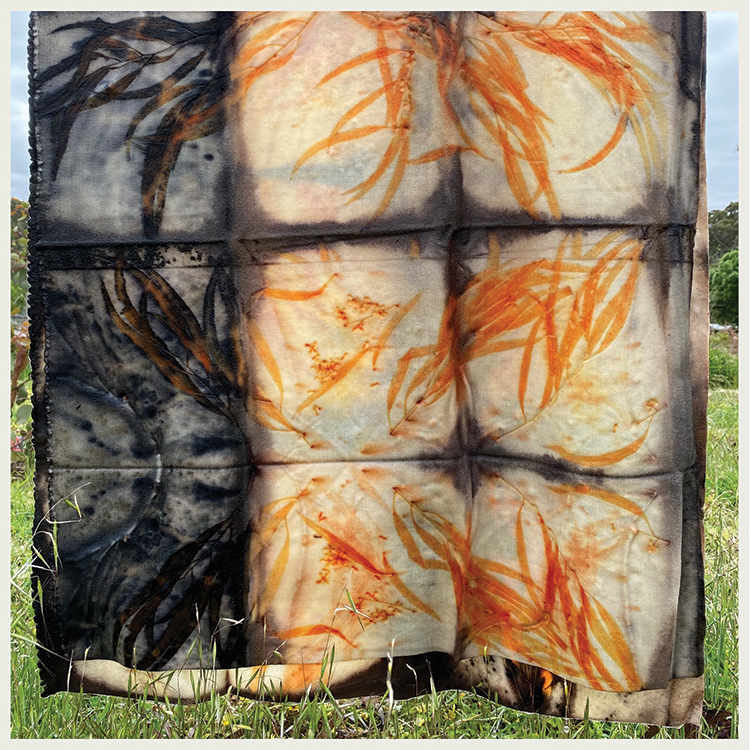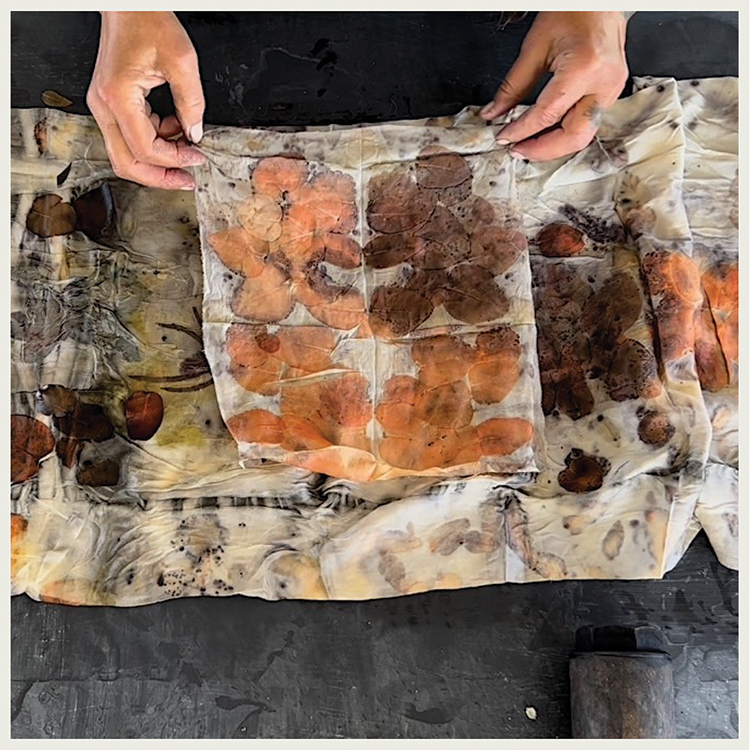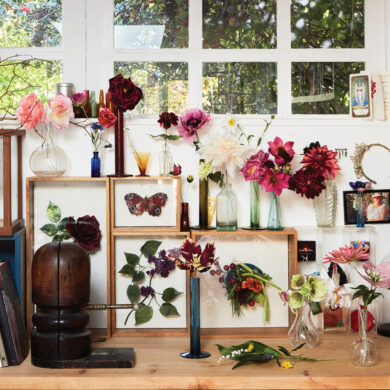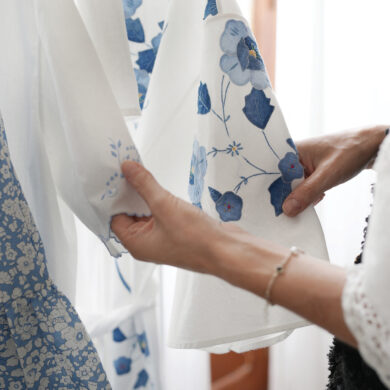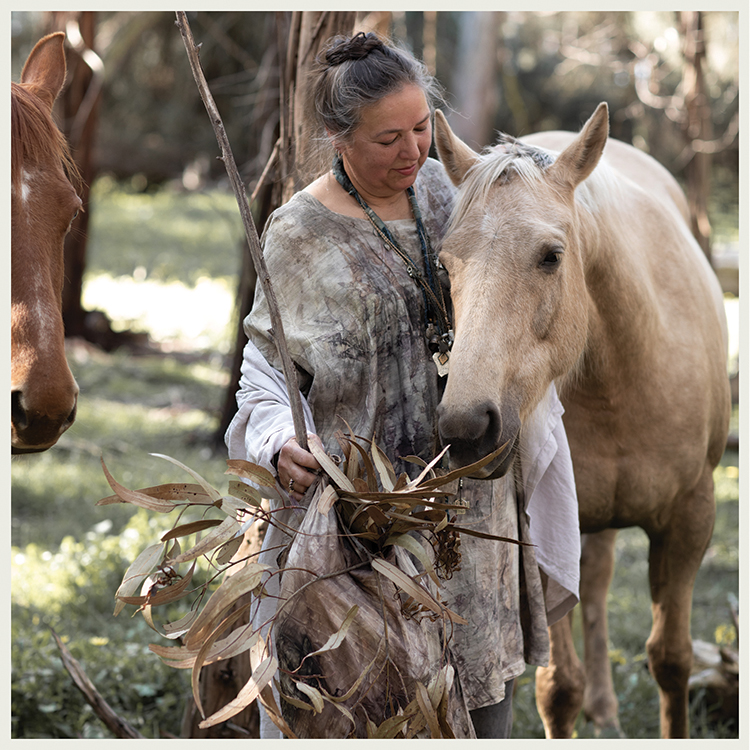
My practice conflates the visual and written poetics of place and memory, using ecologically sustainable contact print processes from plants and found objects together with walking, drawing, assemblage, mending, stitch and text as a means of mapping country, recoding and recording responses to landscape — working with cloth, paper, stone, windfall biological material, water, minerals, bones, the discarded artifacts and hard detritus of human inhabitation, the local weed burden. I am the originator of the eucalyptus ecoprint (discovered in the early 1990s), and my work has kindly been described as using “the earth as the printing plate and time as the press.”
These days, I negotiate a path between installation, printing, painting, drawing, writing and sculpture — immersing myself in and paying deep attention to wherever I happen to be, gathering thought and experience, imagery and marks, as well as harvesting materials for making. I try to step lightly on the land while being nourished by it and plant trees to compensate for the ecological impact of my wanderings. The work of each day, philosophically rooted in topophilia [the love of place], literally begins with a walk.
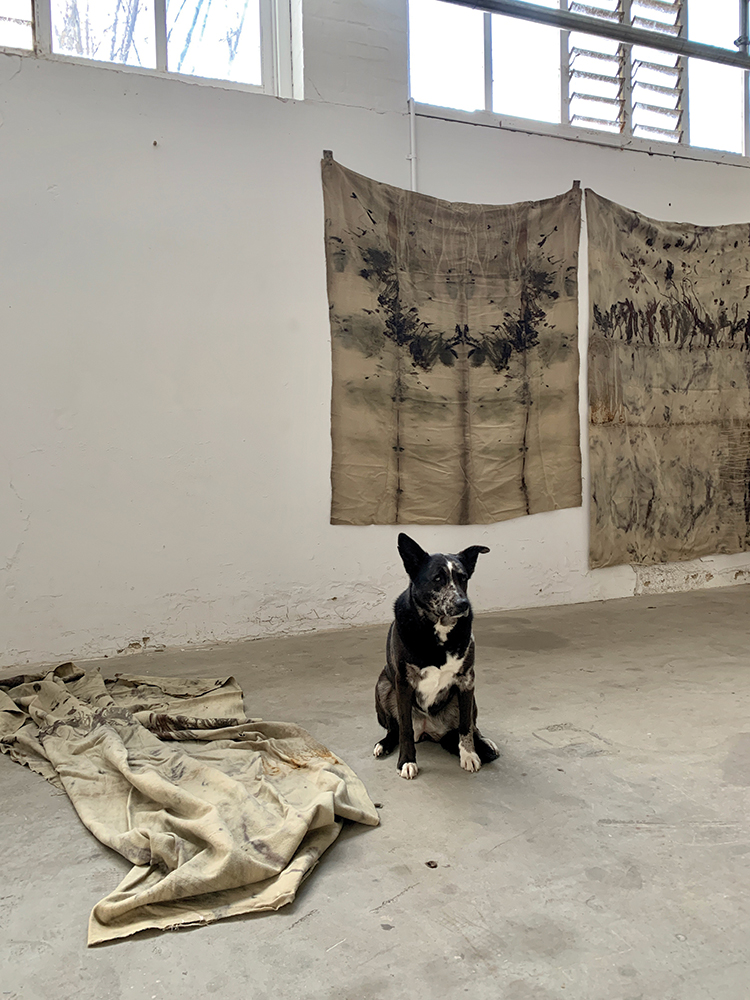
While in the past I have supplied boutiques in Hollywood with unique garments and occasionally accepted commissions to ecoprint lengths of cloth, in recent years, I have withdrawn a little from this world, preferring to create entire exhibitions as installations and environments rather than focus on selling individual pieces. I have been very fortunate in that the School of Nomad Arts (launched in 2018) allows me that kind of freedom in my personal practice while still maintaining a creative connection with students from all over the globe.
So, when Sally asked me to print some pieces of cloth to be used to clothe chickens, I was rather surprised and, I will confess, a little reluctant. I feel somewhat uncomfortable about accepting commissions because I have learned from experience that I am unlikely to be able to create the vision that the client carries in their heart. Sally was incredibly persuasive, though, and the chickens are really rather adorable, so I agreed. I ecoprinted two lengths of wool cloth and packed them up along with a handful of eucalyptus-dyed scraps in case they needed some extra bits.
Astonishingly, two extraordinary fowl have been conjured from my offering. I named them Heloise and Abelard after two historical figures who shared a remarkable love story … too long to tell here, dear reader — you will need to research that one for yourself.
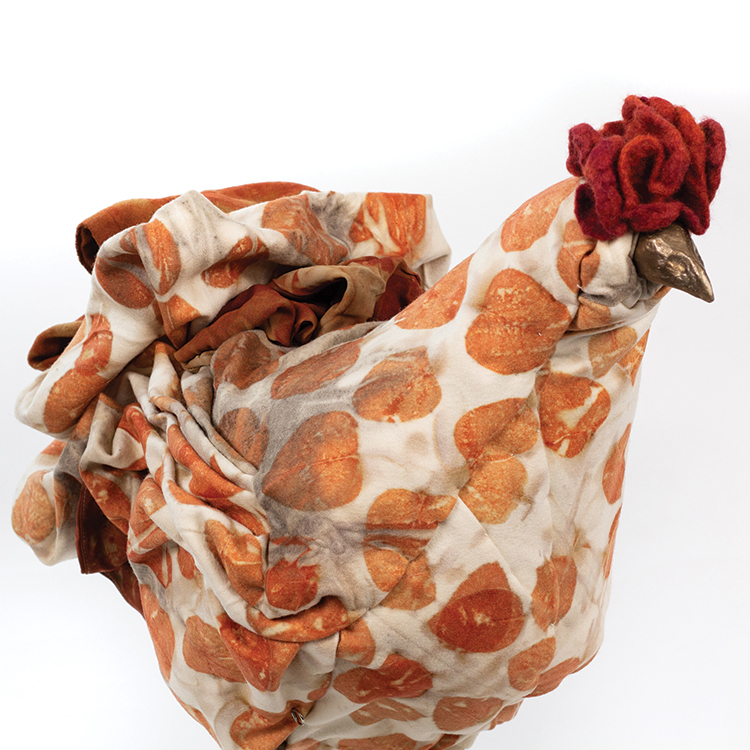
LITTLE HELOISE
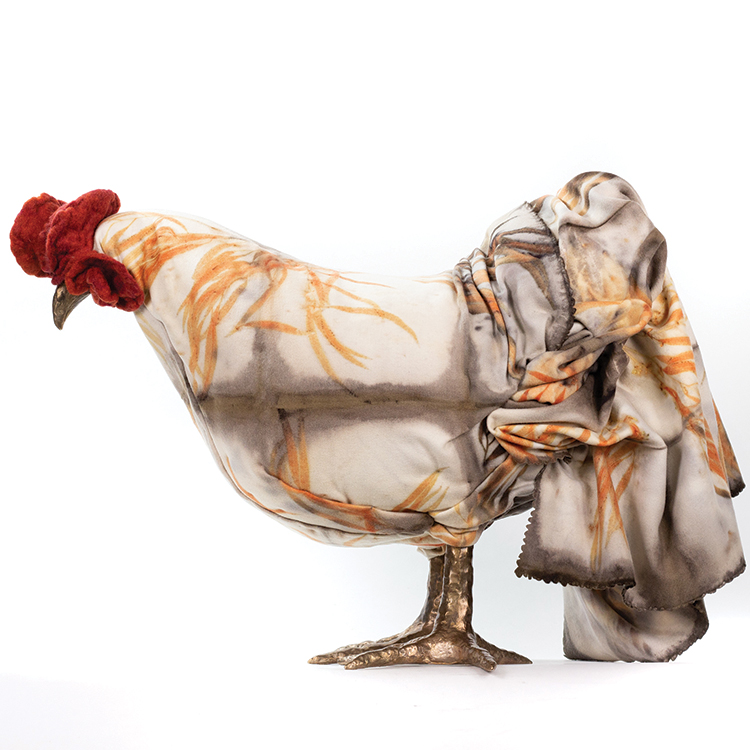
ABELARD

My practice conflates the visual and written poetics of place and memory, using ecologically sustainable contact print processes from plants and found objects together with walking, drawing, assemblage, mending, stitch and text as a means of mapping country, recoding and recording responses to landscape — working with cloth, paper, stone, windfall biological material, water, minerals, bones, the discarded artifacts and hard detritus of human inhabitation, the local weed burden. I am the originator of the eucalyptus ecoprint (discovered in the early 1990s), and my work has kindly been described as using “the earth as the printing plate and time as the press.”
These days, I negotiate a path between installation, printing, painting, drawing, writing and sculpture — immersing myself in and paying deep attention to wherever I happen to be, gathering thought and experience, imagery and marks, as well as harvesting materials for making. I try to step lightly on the land while being nourished by it and plant trees to compensate for the ecological impact of my wanderings. The work of each day, philosophically rooted in topophilia [the love of place], literally begins with a walk.

While in the past I have supplied boutiques in Hollywood with unique garments and occasionally accepted commissions to ecoprint lengths of cloth, in recent years, I have withdrawn a little from this world, preferring to create entire exhibitions as installations and environments rather than focus on selling individual pieces. I have been very fortunate in that the School of Nomad Arts (launched in 2018) allows me that kind of freedom in my personal practice while still maintaining a creative connection with students from all over the globe.
So, when Sally asked me to print some pieces of cloth to be used to clothe chickens, I was rather surprised and, I will confess, a little reluctant. I feel somewhat uncomfortable about accepting commissions because I have learned from experience that I am unlikely to be able to create the vision that the client carries in their heart. Sally was incredibly persuasive, though, and the chickens are really rather adorable, so I agreed. I ecoprinted two lengths of wool cloth and packed them up along with a handful of eucalyptus-dyed scraps in case they needed some extra bits.
Astonishingly, two extraordinary fowl have been conjured from my offering. I named them Heloise and Abelard after two historical figures who shared a remarkable love story … too long to tell here, dear reader — you will need to research that one for yourself.

LITTLE HELOISE

ABELARD





